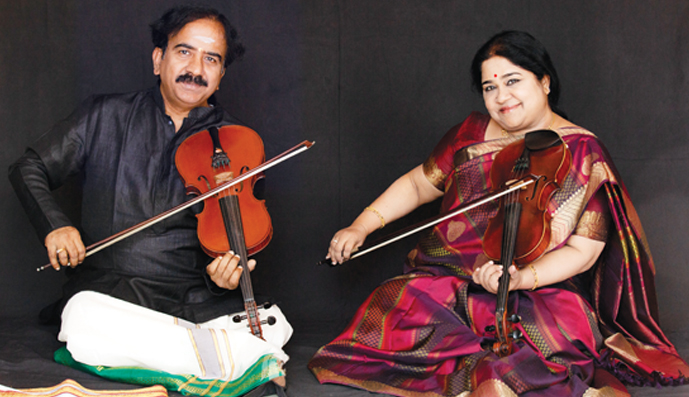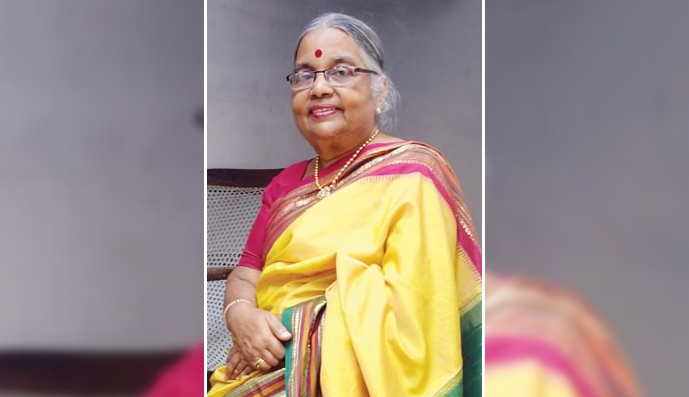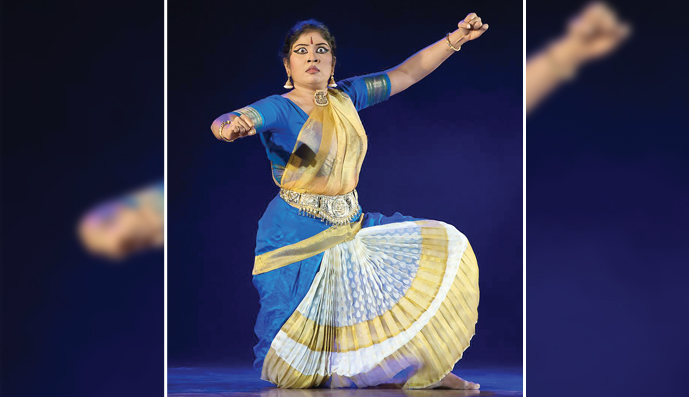Lalgudi G.J.R. Krishnan and Lalgudi Vijayalakshmi, are fifth-generation musicians, the most authentic guardians and torchbearers of the illustrious Lalgudi bani. It is truly an advantage for them that their father, the iconic Lalgudi G. Jayaraman, has been their guru. Born and raised in an atmosphere where everyone lived, breathed, discussed music and violin, Krishnan and Viji, as they are popularly known, naturally imbibed every bit of what needed to be learnt. A strict disciplinarian that Lalgudi Jayaraman was, he never allowed a moment to be wasted in their early formative years of learning. Being around, teaching, mentoring, apprising, performing, he imparted powerful lessons, wrapped in a perfectly designed methodology. The siblings did go to school, and went on to earn their post-graduation degrees, equipping themselves for a corporate career outside. Yet, music was their first priority.
When we delve into the history of music, we can find several musicians across generations who have been leading a solitary life in their native land, devoting their time to teaching and accepting the rare concert opportunities that come their way. They do not chase fame, money or concert opportunities but lead a life of contentment. Their devotion to the art and the commitment to pass on their knowledge to the next generation is worth emulating. One such vidushi is vainika Rugmini Gopalakrishnan, who has been spreading music in Tiruvananthapuram for seven decades now. Rugmini was born on 24 August 1936, as the second of four children, to P.V. Sreenivasa Iyer and Lakshmi Ammal in Tirunelveli district. Losing her father at the tender age of two, she was raised by her grandparents. Twelve-year old Rugmini came to Tiruvananthapuram under the care of her maternal grandfather Harikesanallur Muthiah Bhagavatar and uncle Nellai Krishnamurthy. Her elder sister was married to Nellai Krishnamurthy who was a professor at the Swati Tirunal Academy.
Folk music is a part of the tapestry of village life, and folk songs are the impromptu words that come from villagers, as they go about their daily activities. Musicologist Rama Kausalya, retired principal of the Tiruvaiyaru Music College, says that folk songs serve many purposes. They relieve boredom when the work that a villager has to do is repetitive. She cites the example of those who draw water from a well. In villages, a man would walk along a wooden pole, to one end of which would be fixed a vessel made of skin. The vessel was called ‘kavalai’ or ‘sal’. As the man walked from one end of the pole to the other, the pole would tilt and the vessel would dip into the well and fill up with water. He would then walk in the reverse direction, and the vessel full of water would come up. There are many songs that villagers sang as they walked from one end of the pole to the other. The songs had a functional purpose too. Kausalya demonstrates by singing a song which talks of the ten-day festival in temples, when on each day the processional deity was taken round the streets of the village on a different vahana.
With all her training and talent, Sangeeta Isvaran would have been a successful full-time Bharatanatyam performer had it not been for a calling to use her art in the service of humanity. A disciple of gurus Savithri Jagannatha Rao and the late Kalanidhi Narayanan, Sangeeta is among the first recipients of the Bismillah Khan Yuva Puraskar, awarded by the Central Sangeet Natak Akademi. A versatile dancer who has studied and trained in different dance forms of South Asia, Southeast Asia, Europe and West Africa, covering classical, ethnic and contemporary styles from across the world, Sangeeta speaks eight international languages. She is an empanelled dancer of the ICCR with a mandate for cultural diplomacy. She is a passionate advocate for using art to create social change. She has performed and worked with the arts in education, empowerment and conflict resolution with marginalised communities across five continents, interacting with sex workers, street children, landmine victims, and the like. Today, she has carved her own space, reaching out to thousands of people all over the world.
CONTENTS
6 News & notes
24 Birthday calendar
26 The Lalgudi Siblings (part 1)
42 Musicians of Kerala
v S. Rugmini Gopalakrishnan
45 Season 2020 v Season
sans Sangita Kalanidhi
46 Opinion v Two maestros who missed the Kalanidhi
48 Analysis v Majestic sweep of folk music (part 1)
52 Arts outreach v Sangeeta
Isvaran
58 A peep into the past v Nauka
Charitam
62 Bookshelf
64 S. Rajam’s paintings v Saptaswara devata: Pa
66 From the Editor
Front
Cover: Lalgudi G.J.R. Krishnan and Lalgudi Vijayalakshmi
No.
435






